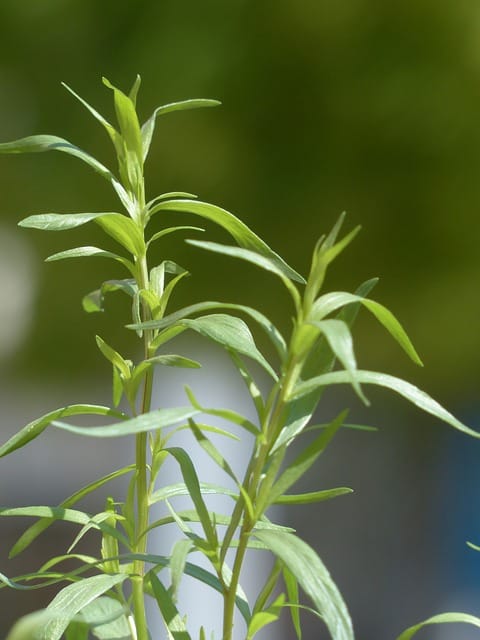How to grow Tarragon
Tarragon is a perennial herb that is well-known for its distinct anise-like flavor and aromatic leaves

In this article:
- Introduction to Tarragon
- Choosing the Right Variety
- Selecting the Perfect Location
- Preparing the Soil
- Propagation Methods
- Planting Tarragon
- Watering and Humidity Requirements
- Fertilizing Guidelines
- Pruning and Harvesting Techniques
- Common Pests and Diseases
- Companion Planting with Tarragon
- Tarragon in Culinary Uses
- Storing and Preserving Tarragon
- Tarragon Fun Facts and Trivia
- Conclusion: Enjoying the Rewards of Homegrown Tarragon
Introduction to Tarragon
Tarragon is a perennial herb that is well-known for its distinct anise-like flavor and aromatic leaves. It is commonly used in culinary dishes such as sauces, vinegars, and marinades. In this article, we will guide you through the process of growing tarragon in your own garden.
Choosing the Right Variety
There are two main varieties of tarragon - French and Russian. French tarragon is the most commonly used variety in cooking due to its superior flavor. Russian tarragon, on the other hand, has a milder taste and is not as highly regarded in the culinary world. It is important to select French tarragon for the best results.
Selecting the Perfect Location
Tarragon thrives in full sun, so it is essential to choose a location that receives at least 6-8 hours of direct sunlight per day. The soil should be well-draining as tarragon does not tolerate waterlogged conditions. Additionally, tarragon is sensitive to cold temperatures, so planting it in a sheltered spot is beneficial.
Preparing the Soil
Before planting tarragon, it is important to prepare the soil. Start by removing any weeds or existing vegetation from the planting area. Tarragon thrives in fertile soil with a pH level between 6.0 and 7.5. Adding organic matter, such as compost or well-rotted manure, can improve soil fertility and drainage.
Propagation Methods
Tarragon can be propagated from seeds, cuttings, or root divisions. However, the most common and successful method is through root divisions. In early spring, dig up an established tarragon plant and carefully separate the root mass into smaller sections. Each section should have several healthy roots and a portion of the crown. Replant these divisions immediately.
Planting Tarragon
Plant the tarragon root divisions at a depth of approximately 2 inches, spacing them about 12 inches apart. Gently firm the soil around the roots and water thoroughly. Mulching around the base of the plants can help retain moisture and suppress weed growth.
Watering and Humidity Requirements
While tarragon requires regular watering, it is important not to overwater it. Keep the soil evenly moist but not soggy. Avoid overhead watering as tarragon leaves are prone to fungal diseases. Tarragon prefers a moderate to low humidity environment, so ensuring proper air circulation around the plants is essential.
Fertilizing Guidelines
Tarragon benefits from regular feeding to promote healthy growth. Apply a balanced organic fertilizer, such as a 10-10-10 or 14-14-14, every 4-6 weeks during the growing season. Avoid using excessive amounts of nitrogen-rich fertilizers as this can result in lush foliage but reduced flavor.
Pruning and Harvesting Techniques
Tarragon should be pruned regularly to encourage bushier growth and to prevent it from becoming leggy. Pinch back the tips of the stems periodically to promote branching. Harvest tarragon leaves by cutting them back to within a few inches of the base. Regular harvesting will encourage the plant to produce new leaves.
Common Pests and Diseases
Tarragon is relatively resistant to pests and diseases. However, it may occasionally attract aphids, spider mites, or powdery mildew. Monitor your plants regularly and take appropriate action if you notice any signs of infestation or disease. Using organic pest control methods, such as insecticidal soap or neem oil, can effectively manage these problems.
Companion Planting with Tarragon
Tarragon is a great companion plant for many vegetables and herbs. It is believed to repel harmful insects and enhance the growth and flavor of neighboring plants. Good companion plants for tarragon include tomatoes, peppers, eggplants, and basil.
Tarragon in Culinary Uses
Tarragon is highly valued for its culinary uses. Its leaves can be used fresh or dried to flavor a wide range of dishes, including salads, egg dishes, soups, and sauces. It pairs well with fish, chicken, and vegetables, adding a unique and pleasant flavor.
Storing and Preserving Tarragon
Tarragon can be stored and preserved in various ways. Fresh tarragon can be stored in the refrigerator for up to a week by wrapping the stems loosely in a damp paper towel and placing them in a plastic bag. It can also be frozen for longer-term storage. Alternatively, you can dry the leaves by hanging them upside down in a cool, dry place and storing them in airtight containers.
Tarragon Fun Facts and Trivia
- Tarragon is native to Europe and Asia.
- It is a key ingredient in Béarnaise sauce, a classic French sauce.
- The name "tarragon" comes from the French word "estragon," meaning "little dragon." It is believed to have been named due to its ability to treat snake bites.
- Tarragon has been used for centuries for its medicinal properties, including aiding digestion and reducing toothache.
Conclusion: Enjoying the Rewards of Homegrown Tarragon
Growing your own tarragon herb can be a rewarding experience. With the right variety, proper care, and a little know-how, you can enjoy an abundant supply of fresh tarragon leaves to enhance your culinary creations. From selecting the perfect location to harvesting and preserving, following these guidelines will set you on the path to successfully growing tarragon in your own garden.
